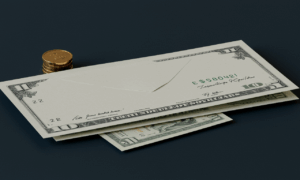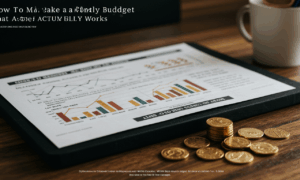Are you struggling to stick to your budget, even with the best intentions? You track your spending, you know where your money *should* be going, but at the end of the month, you find yourself overspending in certain areas. If this sounds familiar, the Cash Envelope System might be the tangible, powerful tool you need to regain control of your finances. This time-tested method forces a level of mindfulness that digital transactions often lack, helping you master your spending habits and boost your savings potential. This guide will break down exactly what this system is, why it is so effective, and how you can implement it today to transform your financial life.
What Exactly is the Cash Envelope System?
The Cash Envelope System is a budgeting strategy that relies on using physical cash for your variable, day-to-day spending categories. Instead of swiping a credit or debit card, you allocate a specific amount of cash into labeled envelopes for each spending category, such as Groceries, Gas, Entertainment, or Dining Out. The fundamental rule is simple yet incredibly powerful: once the cash in an envelope is gone, you stop spending in that category until the next budgeting period.
This method works by creating a hard, physical limit on your spending. It removes the abstract nature of digital money and makes every purchase a conscious decision. When you have to physically hand over cash and see the amount in your envelope dwindle, you feel the impact of your spending much more acutely. This psychological friction is the secret sauce that helps curb impulse buys and enforce financial discipline.
The Core Benefits: Why This Old-School Method Still Thrives
In a world of digital wallets and one-click purchasing, using cash might seem outdated. However, the effectiveness of the envelope method lies in its simplicity and its direct impact on our spending behavior. Here are the main advantages:
- Forced Spending Awareness: You cannot ignore your budget when it is physically sitting in a set of envelopes. A quick glance tells you exactly how much you have left for groceries or entertainment. This constant visual feedback keeps your financial goals at the forefront of your mind.
- Built-in Financial Discipline: The system has a natural stopgap. Unlike a credit card that lets you spend beyond your means, an empty envelope means you must stop. This eliminates the temptation to overspend and worry about it later, preventing the accumulation of unnecessary debt.
- Simplicity and Accessibility: You do not need complicated software or apps to get started. All you need are some envelopes, a pen, and a commitment to your budget. This makes it an accessible strategy for anyone, regardless of their tech-savviness. It’s a foundational concept in personal finance that empowers users with direct control.
- Reduced Impulse Buying: The act of counting out cash and receiving physical change makes each transaction more deliberate. This pause is often enough to make you reconsider an impulse purchase, asking yourself if it is truly worth the money you are about to give up.

How to Start the Cash Envelope System: A Step-by-Step Guide
Ready to give it a try? Implementing the system is straightforward. Follow these steps to set yourself up for success.
- Analyze Your Budget and Identify Variable Expenses: First, you need a clear budget. Differentiate between your fixed expenses (like rent/mortgage, insurance, and car payments, which are typically paid electronically) and your variable expenses. These are the spending areas that fluctuate each month and are perfect for the envelope system. Common categories include:
- Groceries
- Dining Out / Restaurants
- Gas / Transportation
- Entertainment (movies, events)
- Personal Care (haircuts, toiletries)
- Clothing
- Household Goods
- Create Your Categories and Set Spending Limits: Based on your budget, decide how much money you will allocate to each of your variable spending categories for the month (or pay period). Be realistic. If you allocate too little, you will set yourself up for failure. The goal is to be intentional, not restrictive to the point of misery. Write each category on a separate envelope.
- Withdraw Your Cash: At the beginning of your budget period (e.g., the 1st of the month or on payday), go to the bank and withdraw the total amount of cash needed to fund all your envelopes. For example, if your grocery budget is $500, gas is $150, and entertainment is $100, you would withdraw $750.
- Stuff Your Envelopes: Distribute the cash into the corresponding labeled envelopes. This is a crucial step that makes your budget tangible. You now have a physical representation of your spending plan.
- Spend Only from the Envelopes: This is where the discipline comes in. When you go to the grocery store, take your “Groceries” envelope. When you fill up your car, use the “Gas” envelope. Only use the cash from the designated envelope for its intended purpose. Always put the change back in the same envelope.
- Track, Review, and Adjust: What happens if an envelope runs out before the month is over? The strict rule is to stop spending in that category. If it is a true necessity, you may have to take cash from another, less essential envelope (like “Entertainment”), but be aware that you are making a trade-off. At the end of the month, review what worked and what did not. If you consistently have money left in one envelope and run out in another, you may need to adjust your budget allocations for the next month. Any leftover cash can be put directly towards your savings goals!
Common Challenges and Pro-Tips for Success
While effective, the cash envelope system can present a few modern-day challenges. Here is how to navigate them:
- Online Shopping: It is hard to use cash online. A great workaround is to use a dedicated debit card or a prepaid card for online purchases. When you decide to buy something, “pay” your debit card back by taking the cash from the appropriate envelope and setting it aside to be re-deposited into your bank account.
- Safety Concerns: Carrying large amounts of cash can be a concern. A practical solution is to only carry the envelopes you need for that day’s errands, leaving the rest safely at home.
- Partner or Family Budgeting: If you share finances, communication is key. Both partners need to be on board and committed to the system. You might have shared envelopes for household expenses and separate personal envelopes for individual spending.
A Note on Financial Advice
Please remember, the information provided here is for educational purposes to help you explore different budgeting techniques. It should not be considered personalized financial or investment advice. For guidance tailored to your specific situation, it is always best to consult with a qualified financial professional. Exploring strategies like this is a great first step on your journey, which we are happy to support here at MoneyMindsGroup.
Frequently Asked Questions (FAQ)
What is the main difference between the cash envelope system and just tracking expenses in an app?
The key difference is the psychological impact and the hard limit. Expense tracking apps are reactive; they tell you where your money went after you have already spent it. The Cash Envelope System is proactive; it physically prevents you from overspending because you cannot spend money you do not have in your hand. This tangible boundary is often far more effective for changing behavior than a digital notification.
Can I use this system to help me pay off debt faster?
Absolutely. The cash envelope system is an excellent tool for debt reduction. By controlling your variable spending and preventing overspending, you will likely free up more money at the end of the month. Any cash leftover in your envelopes can be immediately put towards an extra debt payment, accelerating your journey to becoming debt-free.





